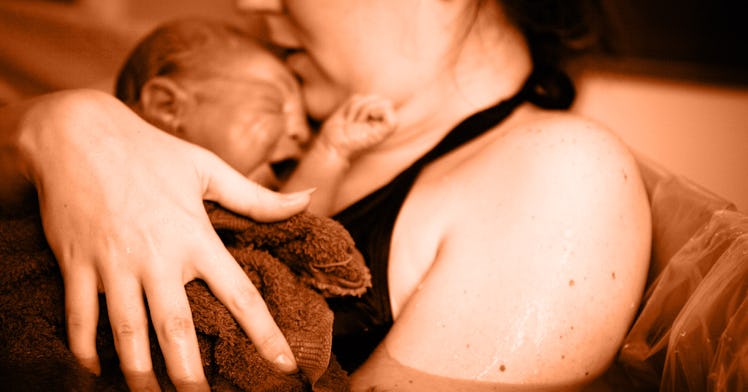Are Home Births Safe? A New Study Weighs The Evidence
A large new study points to the idea that home birth poses no increased risks for mothers and their babies. It’s not that simple.

A new massive meta-analysis of birth at home suggests that couples do not put their babies at an increased risk of perinatal or neonatal death when they give birth at home with a midwife instead of going to the hospital. But don’t expect the American College of Obstetrics and Gynecology to change its preference for hospital births anytime soon. The study’s findings, while promising for homebirth advocates, are just too broad to action upon — and could, in fact, endanger women who make a decision based on this single survey.
First of all, the definition of “home births” in this study, the first systematic review of the literature comparing home births to hospital births, is slippery. They fall into two distinct categories — home births that occur in well-integrated environments where women had access to licensed midwives, proper medical equipment, and a transfer plan in case of emergencies; and less well-integrated environments that don’t have these safety measures. Of the 21 studies included in the paper, only four studies looked at environments that were not well-integrated. Overall, study authors can only draw conclusions about home births under the best-case scenarios, but not necessarily for everyone else, especially women who live far away from emergency medical care.
Second, the study looked only at low-risk pregnancies. There’s good reason for this: Women who don’t have a low-risk pregnancy shouldn’t choose home births. “Even when people decide they want to have home-birth, they should always follow hospital advice regarding health check-ups, screening, and treatments,” explains Dr. Sashini Seeni. “Only those who the doctors identified as low-risk pregnancy can opt for this method of childbirth as to prevent any unintended consequences.”
But clearly defining a low-risk birth is a bit tricky. Some 85 percent of pregnancies are considered low-risk according to the Centers for Disease Control and Prevention, but that doesn’t mean most births are without complication. First-time mothers end up transferring to the hospital between 23 and 37 percent of the time when they attempt a home birth, often because the baby is unable to move through the birth canal. Depending on how long it takes to get to medical care, the consequences can be tragic. “The biggest risk of planning an out of hospital delivery is that you might still end up at the hospital,” Rebekah Mustaleski, a certified professional midwife, explains. ”There simply are no guarantees that something won’t come up that requires a transfer.”
For parents, the takeaway of this study is that there is such a thing as a safe home birth, but there are a myriad of factors that go into what makes it safe. Could home birth, with licensed physicians on call, sterile medical equipment and an emergency transfer plan in place, make births more affordable without compromising the health of the baby or mom? Potentially. Just don’t think you can drop all the medical processes and watch a few YouTube tutorials. Giving birth is not the time to cut corners.